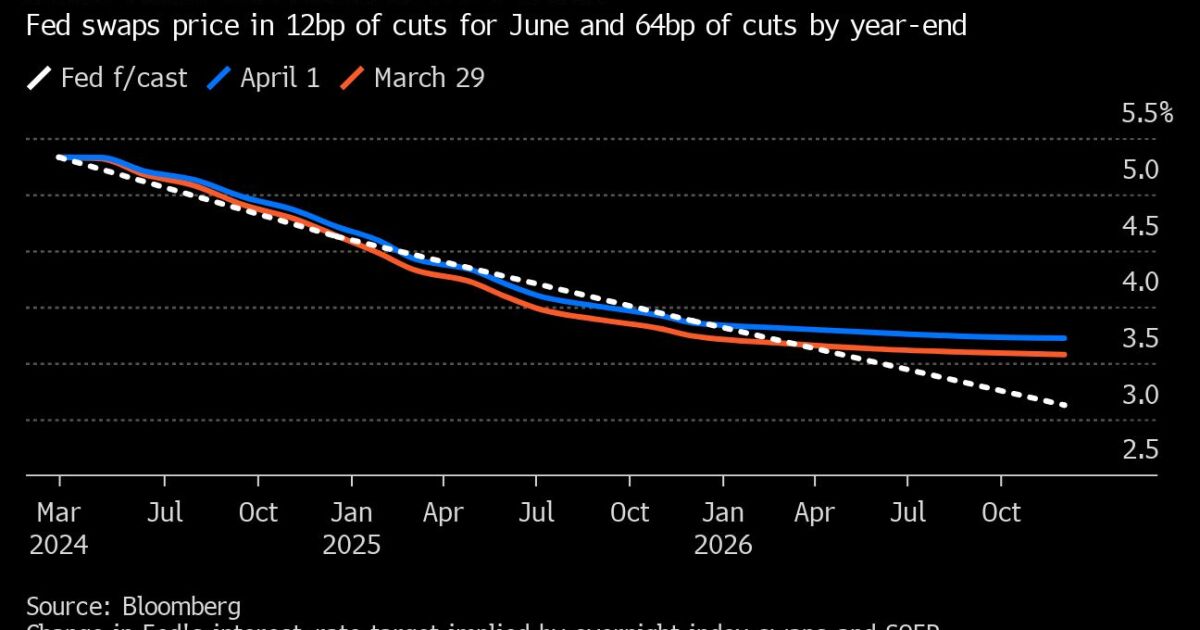June Fed rate-cut odds dip below 50% after strong ISM data
2 min read

Bond traders priced in less monetary policy easing by the Federal Reserve this year — and briefly set the odds of a first move in June to less than 50% — after a gauge of U.S. manufacturing activity showed expansion for the first time since 2022.
The amount of Fed easing priced into swap contracts for this year dropped to fewer than 65 basis points — less than Fed policy makers themselves have forecast — after ISM manufacturing for March exceeded all estimates in Bloomberg’s survey of economists. A bond-market selloff ensued in which two- to 30-year Treasury yields rose at least 10 basis points on the day, among their biggest daily increases this year.
Bloomberg News
The selloff was already under way before the ISM data release as traders reassessed the outlook for monetary policy based on economic figures and comments by Fed Chair Jerome Powell on Friday, when U.S. markets were closed.
The ISM report “feeds into the narrative coming out of last week,” whereby the economy’s resilience enables the Fed “to be patient,” said Gregory Faranello, head of U.S. rates trading and strategy for AmeriVet Securities. For the bond market, that means rates stay “higher for longer.”
Friday’s developments included personal income and spending data for February showing that consumption remains strong while progress toward lower inflation has stalled. Subsequently, Powell reiterated that the Fed wants to be more confident in the inflation trend before cutting rates, and that strong labor-market conditions mean there’s no urgency.
March employment data to be released Friday is expected to show the slowest pace of job creation in several months, though the U.S. unemployment rate remains at historically low levels under 4%.
Also Monday, several new corporate bonds offerings were planned — following a record first-quarter pace. In addition to putting supply-related pressure on Treasuries, robust private borrowing suggests that the level of interest-rates isn’t constraining U.S. companies.
The rise in yields follows the Treasury market’s first monthly gain since December. After losses in January and February caused by erosion in market-implied expectations for Fed rate cuts, the market stabilized in March after policy makers maintained their projection that three quarter-point cuts are likely this year.
At the start of the year, the amount of easing priced in for 2024 exceeded 150 basis points. For some, that expectation was based on the view that the U.S. economy would slow considerably due to the Fed’s 11 rate hikes over the past two years. Since then, growth data has broadly exceeded expectations, while the downward trend of inflation has slowed.







